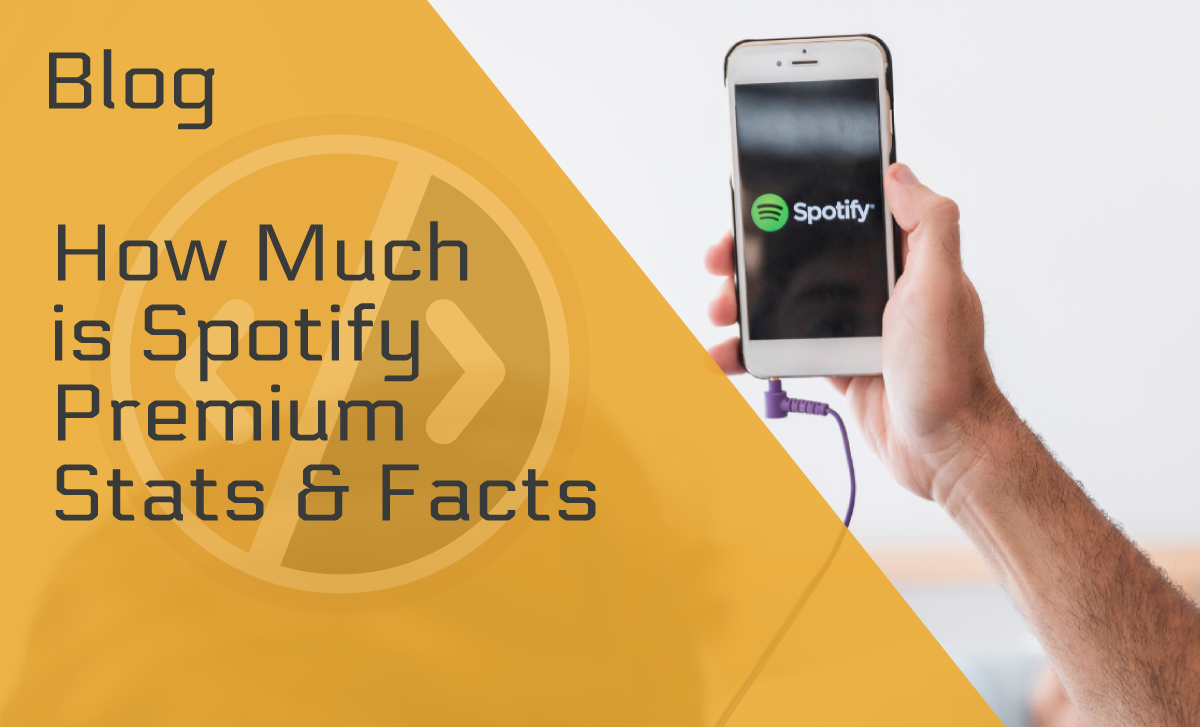36 Fascinating SEO Statistics & Facts You Must Know in 2024
Published: January 16, 2022
Over the last few years, the importance of search engine optimization has become a hotly contested issue. Some believe that the SEO statistics point to it becoming increasingly outdated. They have a pretty compelling argument for this.
Voice search is making it harder to predict the exact keywords to target. Meanwhile, artificial intelligence is making search engine algorithms a lot harder to manipulate. SEO hasn’t been an exact science for a long time now, but this makes things harder.
On the other hand, there are a lot of benefits you won’t see listed among most SEO statistics. The web is a big place, and your site could easily go completely unnoticed without it.
Our research has led us to believe that the truth is somewhere in the middle. SEO is changing, but it’s far from obsolete. We’ve summarized the results of our research here in bite-sized pieces. Why not have a look through and see whether you think SEO is on its last legs? Or do you think that the stats we have will show a different picture?
SEO Stats: Editor’s Choice
- Around 50% of all searches were voice-activated in 2020.
- More than 9 out of 10 times, people prefer organic results.
- Google handled 88.14% of all desktop searches by October 2020.
- Baidu handles 68.53% of all searches in China.
- 63% of buyers in the US start their product research on Amazon.
- 6 out of 10 people won’t read more than a piece’s headline.
- Google processes over 40,000 searches per second.
- Google’s web index comes in at over 100,000,000 gigabytes.
- Posts with images every 100 words or so receive double the number of shares.
- Content marketing generates three times more leads than conventional marketing.
How Many People Use Search Engines?
1. Around 59% of people use the internet globally.
(Source: Statista)
Think of a world without email, social media, Skype, and so on. The internet makes it more convenient for us to perform a large percentage of tasks.
2. 1 out of 6 Americans currently own smart speakers.
(Source: Forbes)
This is going to make a huge difference in SEO statistics, Forbes says. It’s becoming more imperative than ever before to ensure that your site is optimized for voice search. Simple keywords are becoming obsolete—you need to incorporate natural questions throughout your content.
3. Around 50% of all internet traffic comes from mobile devices.
(Source: Statista)
According to the latest SEO statistics, if your site isn’t responsive or takes too long to load, the users will leave it fast. Namely, 43% of users do not return to a website after experiencing issues with access. This, in turn, lowers your site’s ranking on search engines.
4. CarGuru.com lost 30% of its traffic apparently through using black hat linking tactics in 2019.
(Source: Engine Land)
Take this as a cautionary tale. According to the SEO statistics on front-page positioning, a massive 66% of all links to CarGuru.com came from black hat sources in 2019. As a result, when a recent Google update went through, they lost a significant amount of traffic. Using black hat tactics will always come back to bite you in the end. With that in mind, if you plan on launching a successful SEO campaign, by all means, follow Google’s guidelines, and steer clear of shady optimization techniques.
5. Google handled 9/10 searches in 2020.
(Source: GalacticFed)
Google dominates the market when it comes to search, plain and simple. About 87% of desktop and 95% of mobile search traffic goes through Google.
6. According to search engine traffic stats, Bing processed 6.18% of all search queries in 2020.
(Source: Statista)
You’d be wise to spend some time improving your results on Bing. It might not handle as much bulk as Google, but it’s still a force to be considered. Also, Bing performs relatively well in the United States.
7. 93% of online experiences begin with a search engine.
(Source: Forbes)
When you’re looking for information online, where do you start? A search engine is a logical place to look for something new. Now, it’s true that people doing product research are also likely to start their search on a site like Amazon. A search engine provides the perfect tool to kick off some research.
8. Baidu handles 68.53% of all searches in China as of January 2021.
(Source: GS StatCounter)
When it comes to the SEO statistics on front–page positioning in China, companies are largely competing on Baidu, which is China’s favorite search engine. Surprisingly, Google only has a 2.6% market share in China.
Conversely, Sogou, another Chinese search engine, ranks second at 22.49%. All the rest were only lucky to have a tiny bit of market share in this Baidu-dominated country.
Google SEO insights
9. Google’s Dragonfly project proved quite controversial.
(Source: Statista)
Google Dragonfly was a version designed specifically to comply with Chinese censorship laws. However, Google’s initial foray into China lasted just four years. The company pulled out due to concerns over civil liberties being infringed on. This is why the Dragonfly scandal left Google with a lot of explaining to do.
10. High-quality content and links are the best way to rank well on Google.
(Source: Search Engine Land)
Any SEO stats checker knows this. Andrey Lipattsev confirmed it from Google. It’s rare for Google to be so candid about what their ranking factors are. That said, they’ve highlighted the value of high-quality content and links on several occasions. Fortunately, creating great content makes it easier to build links from authority sites.
11. Google processes over 40,000 searches per second.
(Source: Internet Live Stats)
That’s over 3.5 billion searches a day—almost one for each person on the planet. When the company started in 1998, they processed just 10,000 queries a day. What a difference a decade or two makes.
12. Google page statistics show that AI is helping Google improve exponentially.
(Source: Internet Live Stats)
Back in 1999, it took Google at least a month to index around 50 million pages. In 2012, the same amount of data could be analyzed in less than a minute. It’s enough to leave any human feeling a little inadequate.
13. Around 63% of buyers in the United States start their product research on Amazon.
(Source: Statista)
SEO statistics for 2021 show that 63% of buyers in the United States choose to start their search on Amazon rather than Google. This makes sense for shoppers who intend to make a purchase. On Amazon, they have an extensive range of resources, including reviews and product descriptions. No wonder that it exceeded 2.4 billion visits in 2020.
14. The first-spot ranking in a search will net around 34.4% of desktop and 28.72% of mobile traffic.
(Source: Advanced Web Ranking / AnthonyGaenzle)
By comparison, the fourth-place ranking will net just 7.07% of desktop and 6.89% of mobile traffic. The mobile SEO stats reveal that the top three results are mobile-friendly 81% of the time. Being on Google’s first page is no longer enough—you have to hit the top three results, as well as have a mobile-friendly website.
15. Google’s web index comes in at over 100,000,000 gigabytes.
(Source: Google)
The giant has indexed hundreds of billions of pages. It uses the data within its index to provide better quality search results. More recently, the site has been creating its own knowledge pages—a basic summary of the data available across several sites. When you consider search engine statistics like this one, you can see exactly how much competition is out there.
16. Over 9 out of 10 times, people prefer organic results.
(Source: Smart Insights)
Web users are wary of sponsored results and ads. 94% of us will ignore paid results and focus on the organic results instead. For instance, 93.5% of Shopify’s traffic is organic, which only confirms users’ preference towards organic results. That’s why it’s still essential to work on how well your page ranks.
SEO Facts and Figures for Local Searches
17. Claiming your Google My Business page is the number one thing to do to improve your local ranking.
(Source: MOZ)
If you haven’t gotten around to claim it, do it now. Yes, it’s one more thing to remember on a long list. Industry experts think having a valid and up-to-date listing comprises a quarter of the ranking signals for Google’s local SEO stats. It’s free, and it’s important to Google. It should be to you as well.
18. Even if you’re not using GMB, your competitors probably are.
(Source: MOZ)
According to MOZ, 59.6% of businesses have created at least one GMB post. That’s well over half the businesses on Google. If it’s not you, it could be your competitor. Are you missing out on improving your local SEO statistics because you haven’t taken the plunge yet?
19. Over 50% of the people who search for a product or business on their phone visit the store the same day.
(Source: Search Engine Land)
Do you still think it’s not important to rank well locally? Think again. At least half of those searching on their phones will come through the store that same day, according to these SEO stats. The figure drops to 34% for those using tablets or computers. That’s still nothing to sneeze at, though.
20. More than half of the people performing local searches on smartphones need business information.
(Source: Think with Google)
It might be your address or your phone number. It doesn’t matter. There’s a good chance that they will choose the business that comes up in the top spot. Make sure that your business ranks well to cash in on this trend.
21. Internet search statistics show that 46% of all searches through Google are local.
(Source: HubSpot)
If you rely on walk-in traffic, you’re doing yourself a disservice by ignoring the power of local search. Considering that almost half of all searches conducted are locally based, that’s business that could be walking right past your front door.
Social Media
22. Marketers use visual assets in their social media marketing 80% of the time.
(Source: HubSpot)
This is one of the most relevant video SEO statistics in 2021. In fact, social media posts with videos are 63% more effective than blogging, which is at a 60% efficacy. For comparison, YouTube is the leading video content source at 83%, and Facebook follows it at 67%.
23. Instagram’s traffic began to skyrocket in 2019.
(Source: Statista)
Instagram shows the strongest year-on-year growth in referral traffic of all social media sites since 2019. It’s one of the most interesting SEO stats for bloggers promoting their blogs. Today, it continues at this pace, with IG users sharing 995 photos every second. By comparison, Pinterest and Facebook only showed a growth of 9% back then.
Search Terms and Keywords
24. Around 50% of all searches were voice-activated in 2020.
(Source: Forbes)
With AI having improved substantially over the last ten years, voice search has become a lot more accurate. Companies that don’t start adjusting their SEO strategy accordingly won’t be in business for long.
25. Statistics on search engines show that half of all search queries are at least 4 words long.
(Source: Wordstream)
And they’re bound to get longer as more people adopt voice search. That’s why we, as marketers, need to start looking into using phrases instead of simple keywords. Give yourself a head-start by thinking about what questions someone looking for your product or service might ask, and incorporate them into your site’s content.
26. SEO guru Neil Patel increased his search traffic by 123% in one year, but that only resulted in a return on investment of 12.5%.
(Source: Neil Patel)
SEO ROI statistics indicate that this is not ideal. Choosing the right keywords is about more than just getting eyes on your site. If your page isn’t converting well, it doesn’t make sense to focus all your efforts on driving traffic to it. Focus on keywords that drive revenue by ensuring your best-converting pages rank. That way, you’ll get the full benefit of all the work you’ve done to build traffic.
Content Marketing
27. According to SEO statistics, content marketing generates three times more leads than conventional marketing.
(Source: Content Marketing Institute)
It makes sense. A traditional marketing campaign is finite. When the campaign stops running, the leads stop. With content marketing, however, the content is always out there. One blog post can bring you leads today and 10 years from now.
28. You can save money on content marketing by repurposing existing content.
(Source: Sprout Social)
Search engine marketing stats show that the right mix of different types of content will boost rankings. Content marketing means producing a lot of content. You can ease the burden a little by repurposing existing content. This includes updating old content, expanding on it, or changing the format. For example, take a blog post, and create a video or podcast with it. You can also make your content more engaging by adding two or more images to it, which is precisely what 54% of bloggers do.
29. SEO stats for bloggers reveal that the average length of articles in the top spot of Google is around 1900 words.
(Source: Search Engine Journal)
Longer-form content is a better bet if you want to rank well, which is contrary to the popular belief that 200–500 word-long articles can rank your site well. Google wants high-quality, informative content. Longer-form content is seen as more informative because it touches upon more details.
30. Posts with images every 100 words or so receive double the number of shares.
(Source: BuzzSumo)
SEO stats indicate that you should include images every 75–100 words. However, they must be relevant to the article. We live in a visual age, after all. People don’t want to deal with long, overwhelming blocks of text. Images break up the text and give people an idea of what the article is about.
31. 50% of well-shared posts have no links.
(Source: MOZ)
Take note of this when you consider other search engine optimization statistics and tactics. There’s no correlation between the number of times you share an article and how many quality backlinks it has. People have different reasons for sharing than they do for linking to a post. Therefore, you need a separate social media marketing and link-building strategy to succeed.
32. “Why” articles tend to have, on average, 5.66 sites linking to them.
(Source: MOZ)
The search engine marketing stats reveal that the number is slightly higher than for “How to” posts, which have an average of 4.41 links. Conventional wisdom holds that your content should be as neutral as possible to avoid offense. Opinion pieces, however, usually outperform editorial pieces. People like to create a talking point. Think of your content as a conversation starter. It shouldn’t be offensive, but it could be a little controversial if you prefer. Check your facts and make a case.
33. The ideal length of a headline is 60–100 characters, according to SEO statistics.
(Source: CoSchedule)
That means you have to make every headline count. It would help if you chose something that will grab the readers’ attention and make them want to read the rest of your article. It’s better to steer clear of clever headlines that say nothing about what the content is about. “To Beam or Not to Beam” is cute, but it doesn’t tell you that the article is about installing security beams. Trust us, search engine traffic stats don’t lie.
34. The ideal meta description length is less than 155 characters.
(Source: HubSpot)
The length of this paragraph is ideal for your meta description. Any longer, and Google might not display it all. Get to the point fast.
35. A seven-minute read time gets the most engagement.
(Source: Medium)
Consider how long it takes to read through it as well. SEO statistics indicate that you need to go beyond just looking at a post’s word count. If possible, send your content around to a few people and time how long it takes them to finish it. Seven minutes seems like an eternity online. Medium found that it provided the perfect balance between being informative and being too long to muddle through.
36. 40% of people respond better to infographics than plain text.
(Source: Search Engine Journal)
Many statistics on the search engines’ ranking criteria show that it matters how long someone stays on your site. The longer, the better. Infographics break information up into manageable pieces and create an interesting visual element as well. You can present the same amount of data but generate more interest with an infographic. It’s also a great way to repurpose content.
Conclusion
There’s still a lot of value in search engine optimization. It’s a dynamic field, and if we want to keep getting it right, we need to stay current on the latest developments.
Reading relevant SEO statistics for 2021 can expand your SEO knowledge. Fortunately, we’ve done a lot of the legwork for you. We sourced our information from industry experts and trusted authorities so that you can rely on this page’s accuracy. Feel free to use it as a resource to help you improve your position in the SERPs and grow your traffic.
Which SEO statistics are of most interest to you? Let us know in the comments below.
Sources
- Statista
- Forbes
- Statista
- Search Engine Land
- Statista
- Internet Live Stats
- Statista
- Advanced Web Ranking
- Search Engine Land
- AnthonyGaenzle
- Internet Live Stats
- Smart Insights
- MOZ
- MOZ
- Search Engine Land
- Think with Google
- HubSpot
- HubSpot
- Statista
- Forbes
- Wordstream
- Neil Patel
- Content Marketing Institute
- Sprout Social
- Search Engine Journal
- BuzzSumo
- MOZ
- CoSchedule
- HubSpot
- Medium
- Search Engine Journal
- GalacticFed







